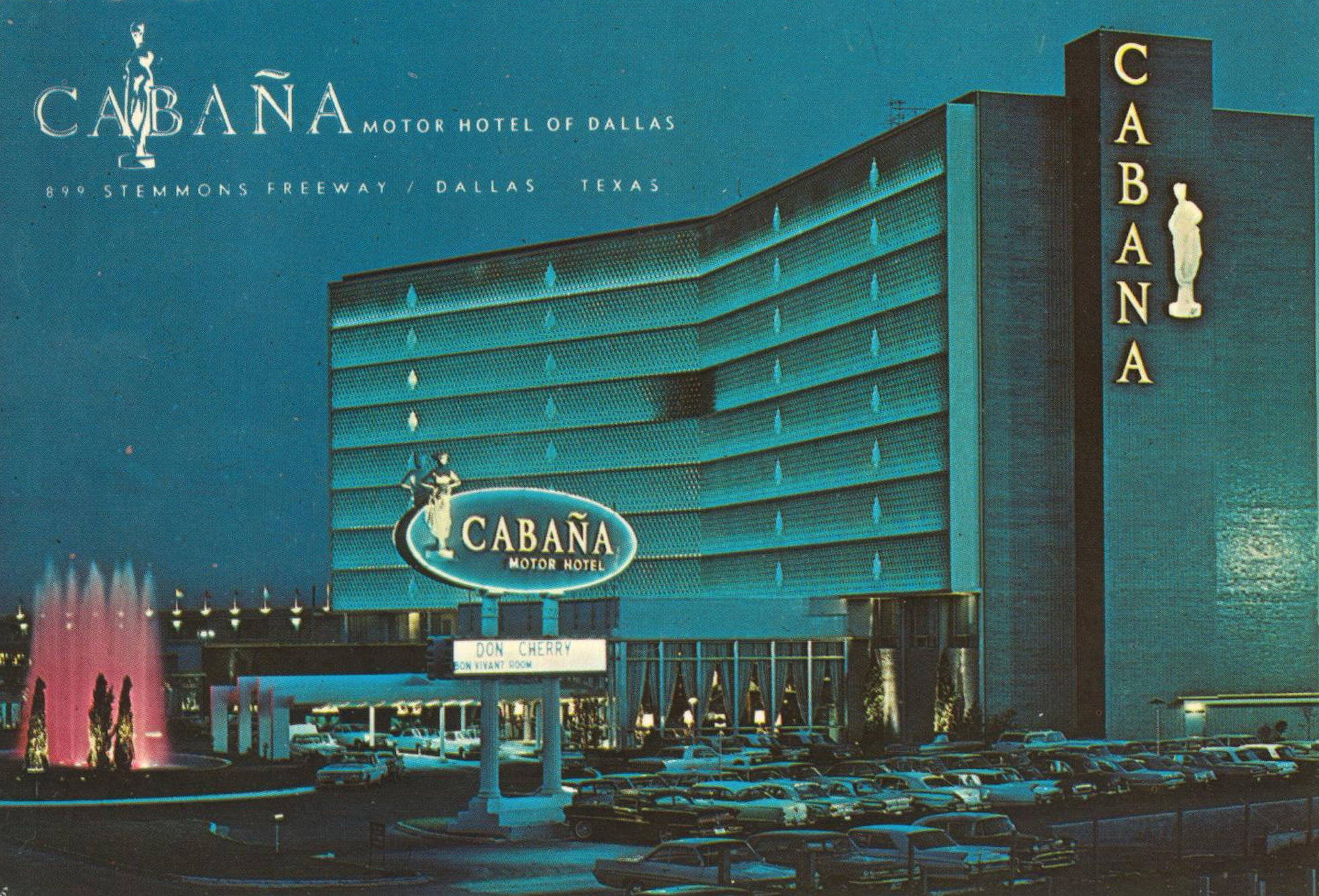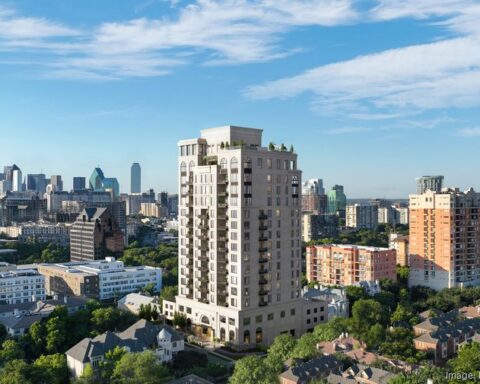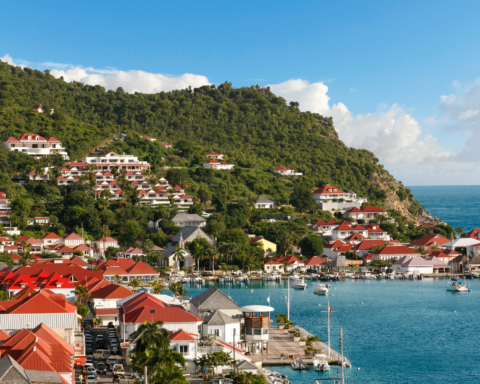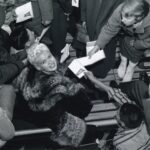There is a renaissance happening in Dallas’ sleek hotel world these days. In a city that’s always offered its visitors the finer things in life that’s no surprise. But where did it all begin? Our ardent pop culture adventurer Lori Duran takes a look at how the city’s hotels earned their famed reputation for luxurious hospitality.
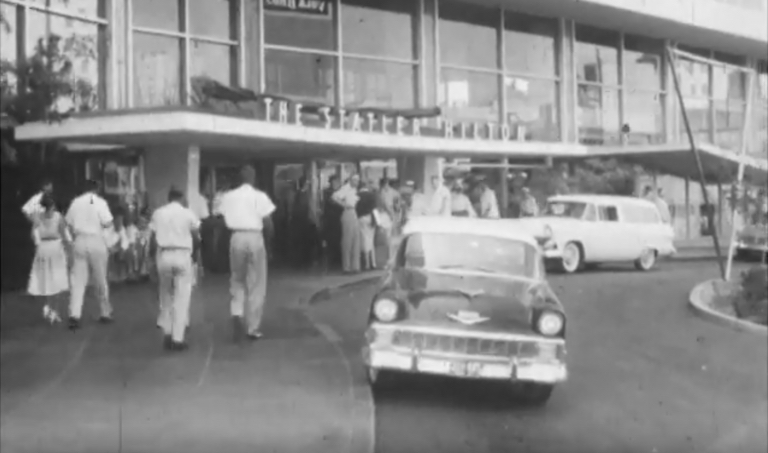
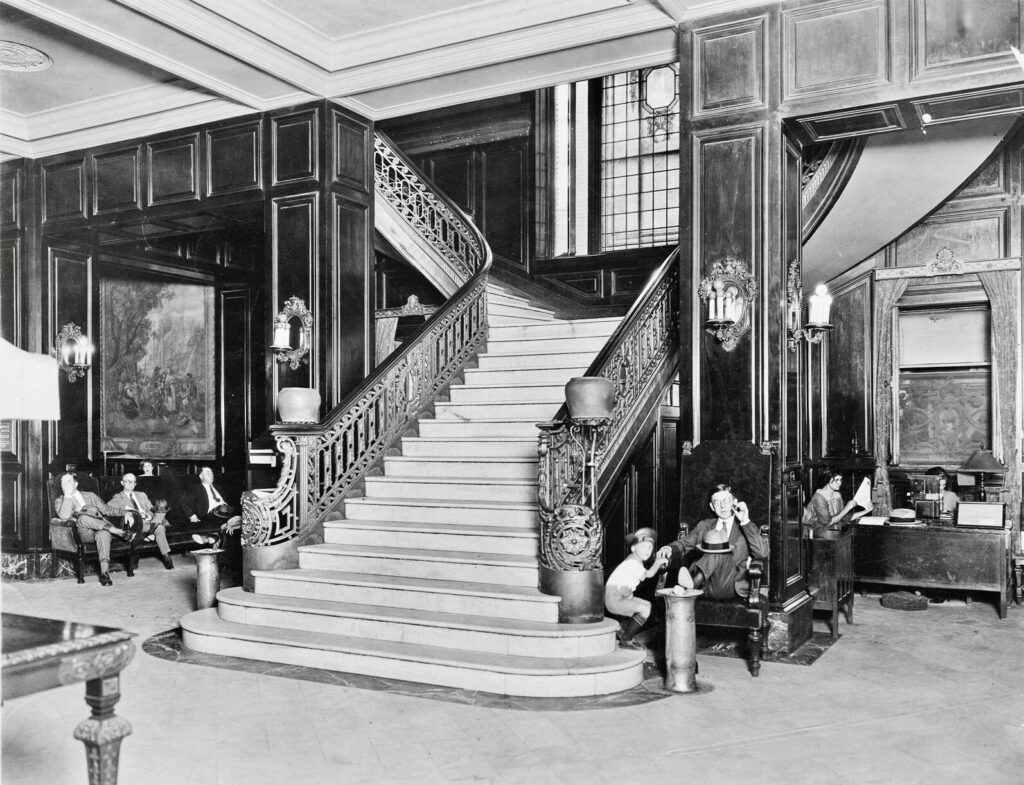
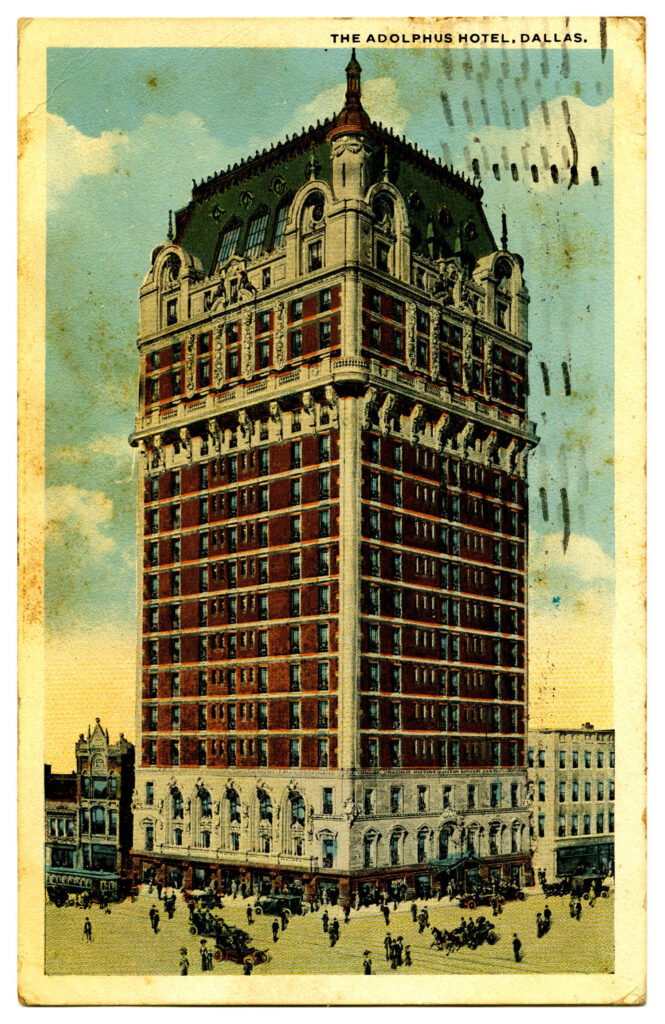
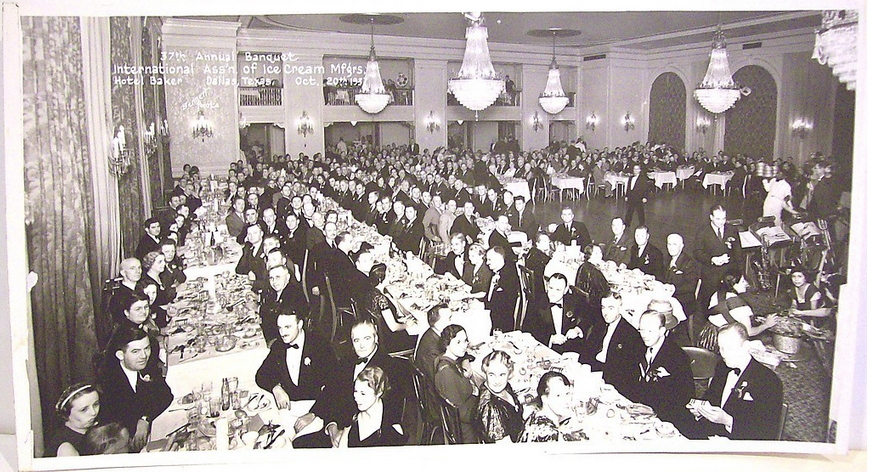
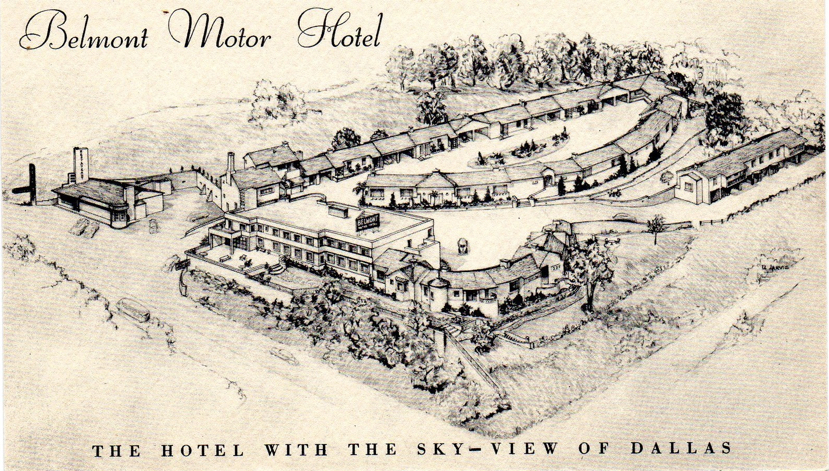

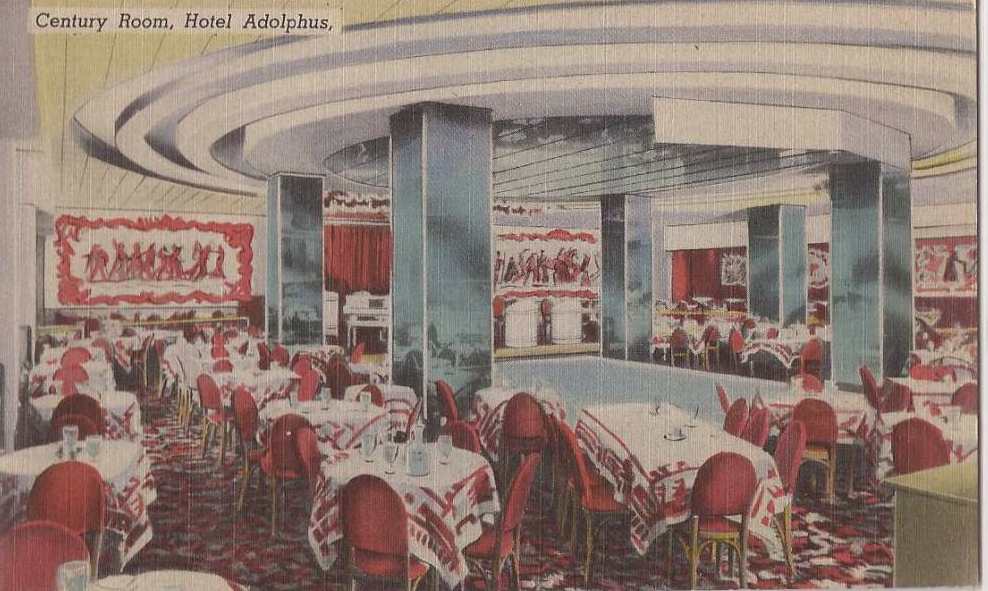
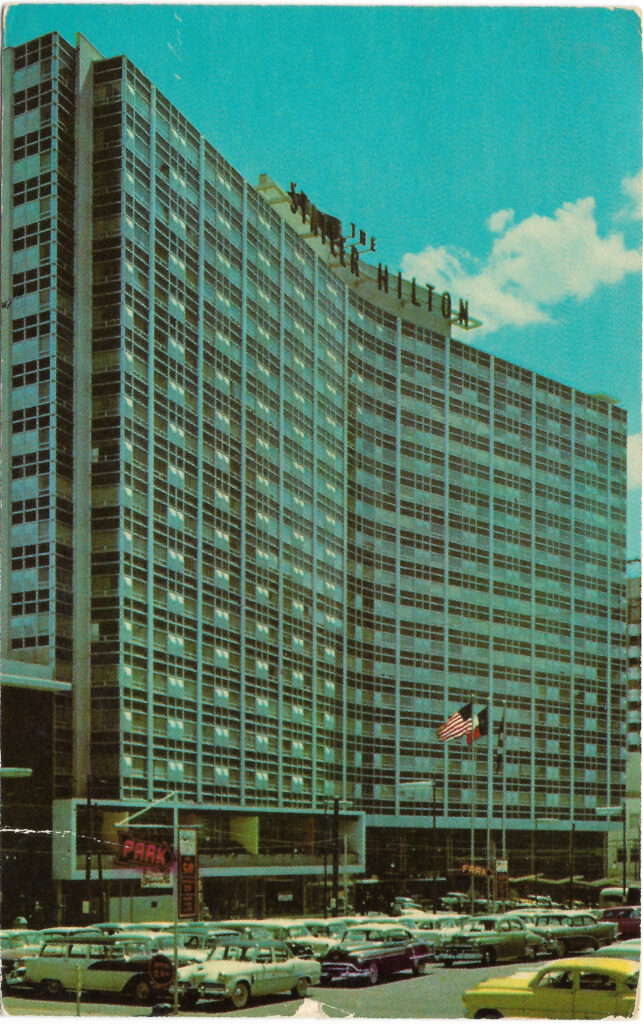
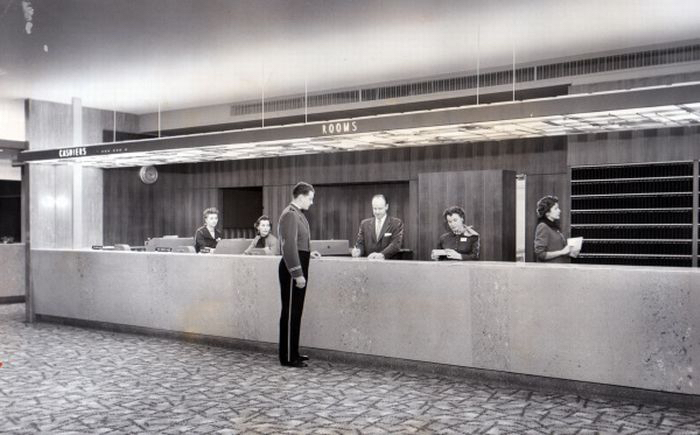
While brushing up about Dallas history recently I found out that a young Raquel Welch was once employed as a cocktail waitress at Dallas’ Cabaña Hotel. Who knew? Curious, I wanted to find out more about that hotel which hosted the Beatles and Lez Zeppelin during its short run, too. I’d also heard the humorous story about the Adolphus Hotel guest who went there with his grandmother to eat Baked Alaska. In the end, he loved it while grandmother thought there should have been more bourbon in it. So, I wanted to look into a few of these legendary and historic hotels and how they came into prominence.
Most of the hotels that opened before the 1930s were relatively small by today’s standards with few exceptions. Ones that opened between 1930 and 1965 were larger and brought some mid-century glamour to Dallas. And the hotels that opened between 1965 and 1986 were relatively large with a few exceptions. For this look into Dallas hotels I consulted Sam Childers’ The Historic Hotels of Dallas and Liz Carmack’s Historic Hotels of Texas: A Traveler’s Guide. Interestingly, the ascent of Texas hotels correlated with the epic rise of the state itself.
TEXAS RISING
Before 1930, Dallas acquired mostly small stylish hotels that shaped the city to be a highly desirable destination for business and travelers. The Oriental Hotel opened in the late 1800s with every conceivable and available luxury in its day and notable citizens of Dallas attended the festive opening ceremony. It was the epitome of Victorian opulence. The Oriental was the best hotel in town when President Theodore Roosevelt stayed there in 1905. Unfortunately it was torn down about thirty-one years after it opened. The Ambassador Hotel opened near City Park in 1905 as the Majestic Hotel. The building was once considered Dallas’ most luxurious residential property and was touted as the city’s “first suburban luxury hotel.” In 1907 it became the Park Hotel. Stories circulate that this hotel held a speakeasy in the basement during prohibition. In the late 1930s the brick and stone building was given a covering of stucco and renamed the Ambassador Hotel. Presidents, celebrities and members of the Dallas mafia stayed there. Despite its exciting history the Ambassador became a retirement home by the mid-1950s. The current owners plan to renovate the 114-year-old former hotel into residential micro lofts that will offer tiny house living in the city’s urban core as trendy affordable housing.
When the Adolphus Hotel opened in 1912 at 1321 Commerce Street it was the grandest and the largest of the early hotels and for the next ten years, plus it was the tallest building in Texas. It was built by, and named after, Adolphus Busch of Anheuser Busch. At the time Busch had a brewery in Dallas. The Adolphus was built to be a posh downtown hotel in Dallas and by 1950 it had expanded to nearly 1,300 air-conditioned rooms. This beaux arts grand dame structure had an impressive Mansard roof and Baroque details in bronze and granite. It’s restaurant, the French Room, matched the rest of the hotel’s lavishness with Rococo artistry and gold ornamental plaster along with crystal chandeliers. Luminaries stayed and performed at the Adolphus, like Queen Elizabeth and Prince Phillip who stayed there in 1991 and notable comedians like Bob Hope and Jack Benny honed their comedic talents there. Within its environ of a walnut paneled lobby, a marbled grand staircase and a Louis XIV styled dining room, The Century Room was once the place for dancing and be entertained by the likes of Glenn Miller and his orchestra. When the hotel was remodeled in the 1980s, much of the hotel’s grandeur was restored, yet it greatly reduced the number of rooms in the process. In 2005, The Adolphus renovated its 422 remaining guest rooms and suites and today it continues to operate as Dallas’ prestigious downtown hotel. The French Room has also just recently reopened after an extended renovation.
HOW THE 20s ROARED
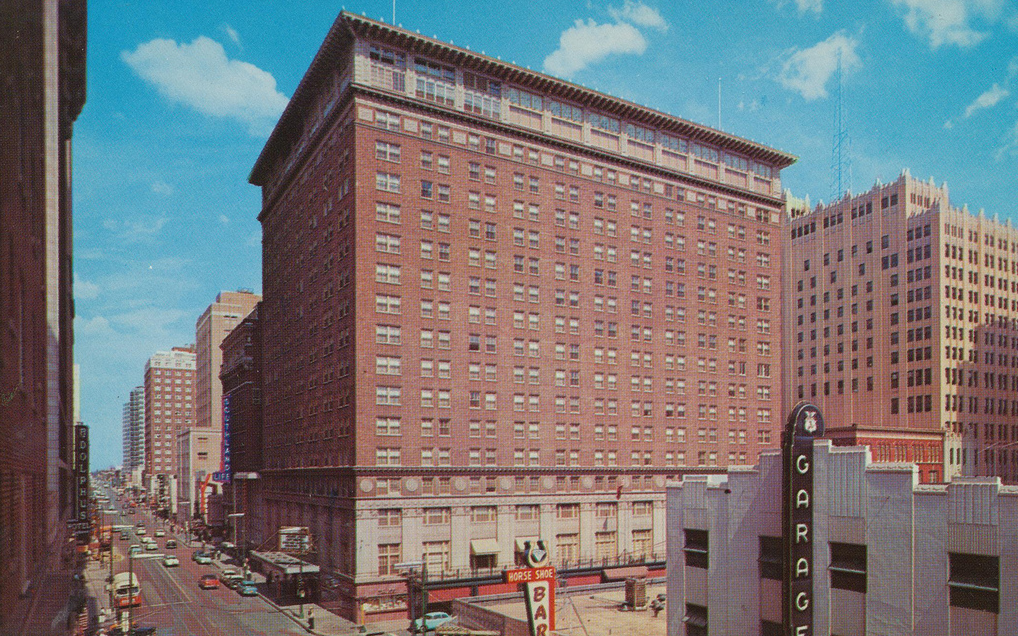
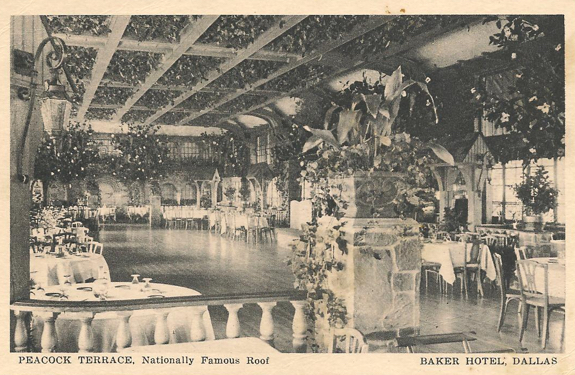

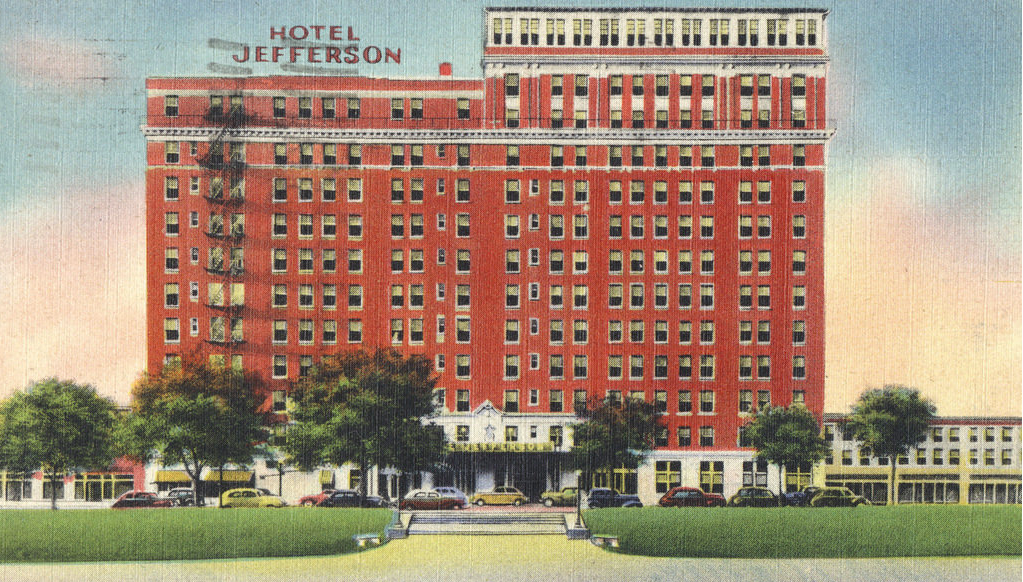
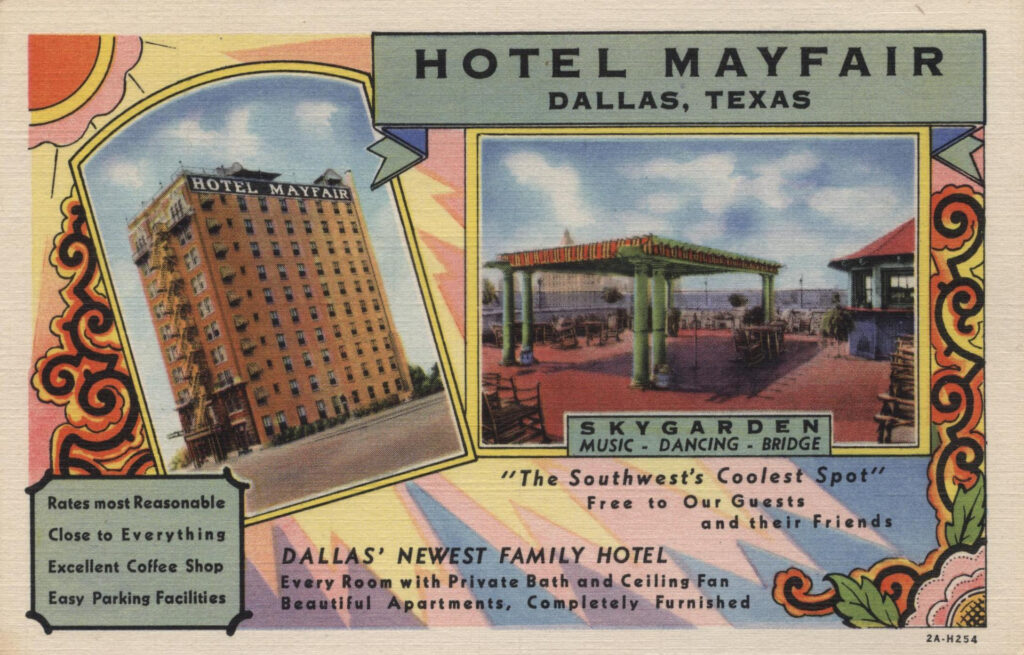
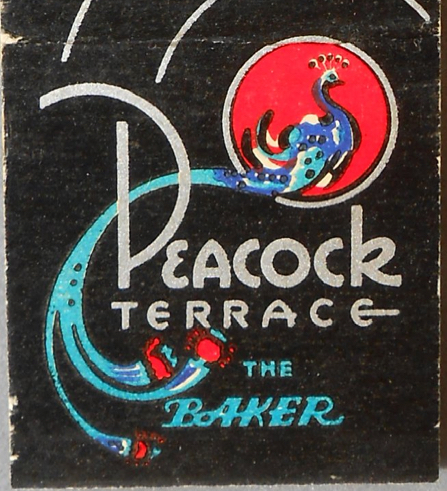
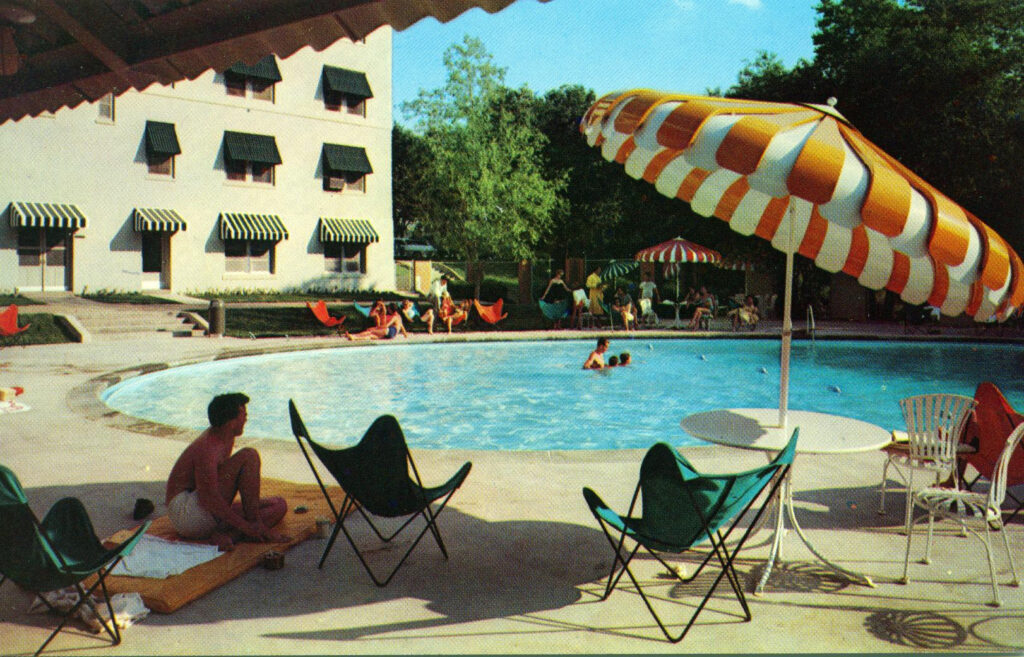
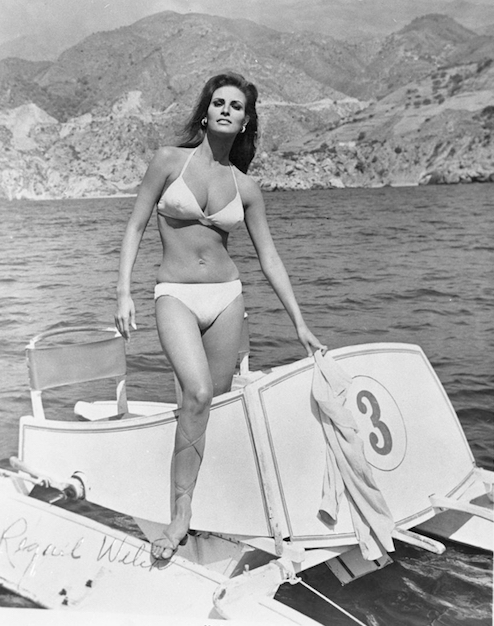
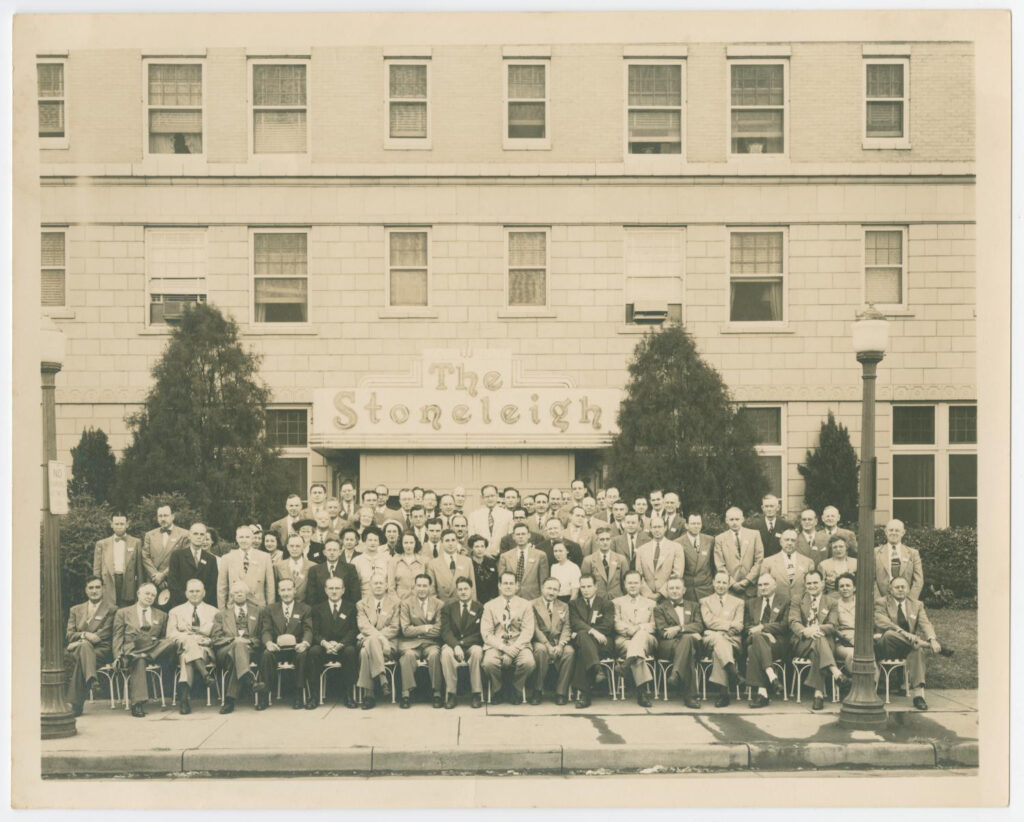
Competing nearby was The Baker Hotel, which opened in 1925 on the same spot where the Oriental Hotel had been torn down the previous year, at the southeastern corner of Commerce and Akard streets. It was known for its Peacock Terrace and Crystal Ballroom. In the early years, before air-conditioning, the main dining room closed during the summer and the rooftop Peacock was used for meal service. At the end of World War II people celebrated enthusiastically and some revelers in Dallas got carried away ripping up pillows at the Baker and Adolphus hotels rooms and dumping the feathers out the windows and into the street below. It closed in 1979 and the building was imploded in 1980.
The Stoneleigh Court Hotel opened in 1923 and with a 7500 square foot penthouse it was once described as the finest apartment hotel in the south. The penthouse was well known for its English manor décor as well as the extensive art, sculpture and antique collections. Past guests of the Stoneleigh included Elvis Presley, Judy Garland, Oliver Stone and Britney Spears. Nearby, The Melrose Hotel was built in 1924, on farmland originally owned by the Civil War veteran, Confederate Col. George Mellersh. It was designed in the Sullivan-esque Chicago style. Now known as the Warwick Melrose – Dallas and continues to serve graciously in the Oak Lawn neighborhood.
The Hilton Hotel was built in 1925 by Conrad Hilton. This was his first hotel to bear the “Hilton” name and was built by Conrad Hilton himself to be a prominent high-rise hotel, located at the corner of Main Street and S. Harwood Street in downtown Dallas. The Hilton had two large towers in a horseshoe design with a connecting bridge. Hilton’s personal and family life was certainly star-crossed. He was married, at one time, to Zsa Zsa Gabor and one of his sons later married Elizabeth Taylor. Hilton developed his own chain of international hotels and resorts over the following years and the Hilton Hotels expanded in Dallas including a hotel close to Southern Methodist University in the 1960s which included a Trader Vic’s Polynesian restaurant. Today that site is now the boutique Hotel Palomar. After Hilton relinquished his lease on its original Dallas hotel in 1938 it changed hands and names a few times and currently houses the Hotel Indigo.
MID-CENTURY MAVERICKS
The years between the depression and 1965 produced several stylish hotels in Dallas that added mid-century glitz and rock ’n roll royalty to the Dallas hospitality field. The ultra-modern 1000-room Statler Hilton Dallas open in 1956 amid great excitement. Located at 1914 Commerce Street it boasted having the first heliport in Dallas. At that time it was the largest hotel in the Southwest, and the Statler attracted conventions to Dallas. Conrad Hilton acquired controlling interest in Statler Hotels, so the name of the hotel reflected this bond. This hotel had many innovations geared towards trade shows. It had flexible and large ballrooms, exhibitors panels with hidden electrical outlets, hoists for lifting automobiles into the ballroom and more. The opening ceremony brought in celebrities like Ann Miller, Hedda Hopper, Dorothy Malone and George Gobel. Interestingly, this is the hotel where Tina Turner left Ike Turner as he slept in their hotel room.
But all good things come to an end. In 1988, the Statler became the Dallas Grand Hotel and then it closed completely in 2001. It reopened in 2017 as the Statler Hotel and Residences. Then there was The Sheraton Hotel was built in 1959 and boasted “Texas-sized” rooms. As the key focal point of the landmark Southland Center the Sheraton attracted Jayne Mansfield and Johnny Weissmuller among the celebrities that attended the opening gala.
The Fairmount opened in 1969 and its stunning and legendary Venetian Room showcased top entertainment that was rarely seen outside of New York or Las Vegas. In 1970, Jill Kohnert Nicholson recalls seeing Diana Ross & the Supremes at one of their last performances before Diana Ross would start her solo career. Nicholson reflects, “Diana Ross was beautiful and a supremely confident singer and entertainer. Her group of three harmonized beautifully together and almost every song they sang was at the top of the charts. I remember that I dressed in a formal for the intimate concert and the hotel was very opulent. In fact, the Venetian Room was intimate, and golden in color, and it was like having a concert in one’s living room—very special and memorable.” The chic venue also booked other top talent over the years including Lou Rawls, Patti Page, Carol Channing, Bobby Short, Peggy Lee, Tina Turner, Johnny Mathis, Tony Bennett and more.
The Cabaña Hotel opened in 1963 on Stemmons Freeway, and it instantly acquired an allure when the Beatles stayed there in 1964. It was stylish with some unusual décor. The exterior had a latticework pattern of delicate concrete X-shape blocks while the lobby was designed with two-story glass walls connected to a porte-cochère with an arched roof. The spacious lobby had gold and white accents and a grand sweeping staircase. The interior was lavish and colorful with a Roman style offered s sunken circular conversation area carpeted in aqua with a crystal chandelier hanging above. Artwork included replicas of Michelangelo’s David, Bacchus, and Venus De Milo. The large hotel rooms had mirrored walls and gold-accented furniture.
The Cabaña had a flashy lounge with young attractive cocktail waitresses wearing short toga dresses. Raquel Welch worked there as a cocktail waitress for a time in 1963. And it had other connections with well-known people. Jimi Hendrix, Led Zeppelin and Jimmy Hoffa also stayed there. Doris Day’s money was invested in the Cabaña by her then husband Marty Melcher. The Dallas locale was the third for the investors of the Cabaña hotels, with the other two in Atlanta and Palo Alto. With 300 rooms, 57 of those were suites, it was fabulous for a while, but by the end of the 1960s it was in financial and legal distress. Day’s husband had died and left her deeply in debt. It was sold in 1969 to Hyatt House and was renamed Hyatt House Hotel. It changed hands again just six years later and it became Dupont Plaza. In 1984, the Cabaña was purchased and re-purposed by Dallas County, into a minimum-security prison that operated until 2013. In 2017 it was sold to a developer who will revitalize it’s former glamour for a modern audience to enjoy upon completion. Since the mid-1960s, Dallas has added some large hotels whose scope and size have forever changed the convention business and Dallas has emerged as a major player amongst large cities.
SEXY 70s & 80s
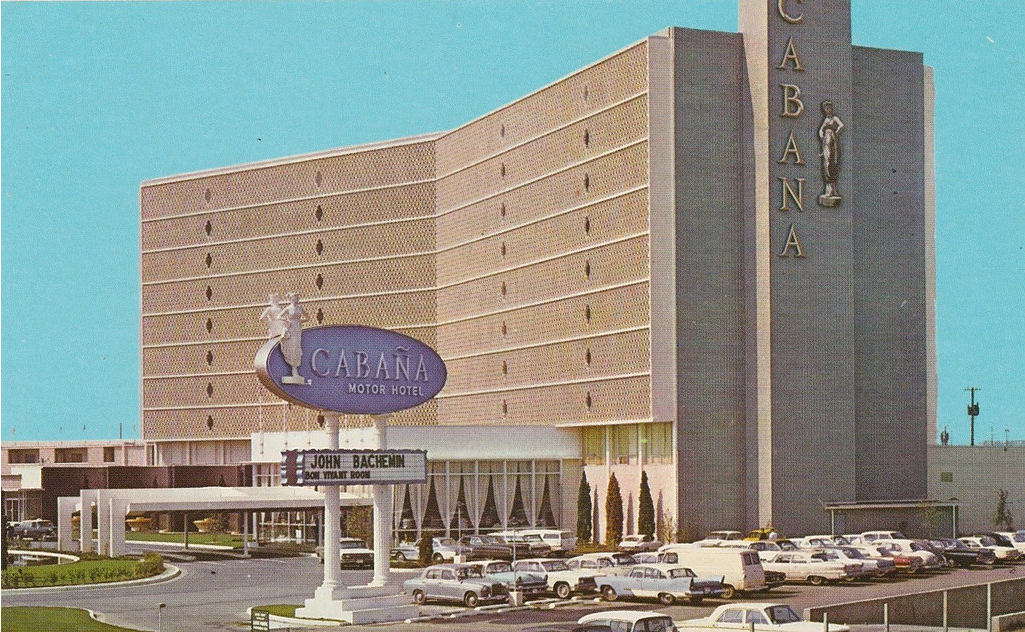

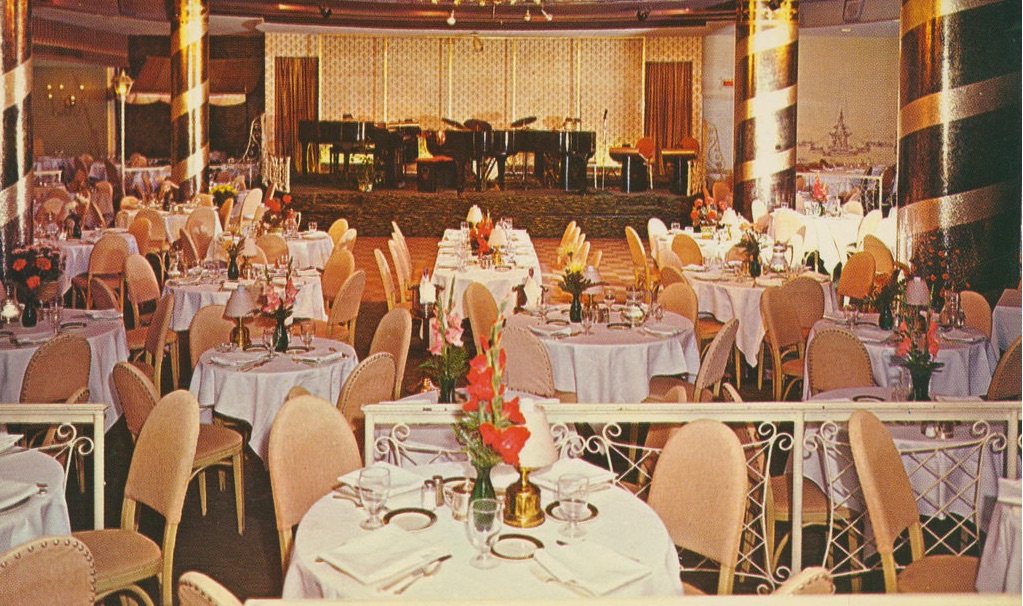
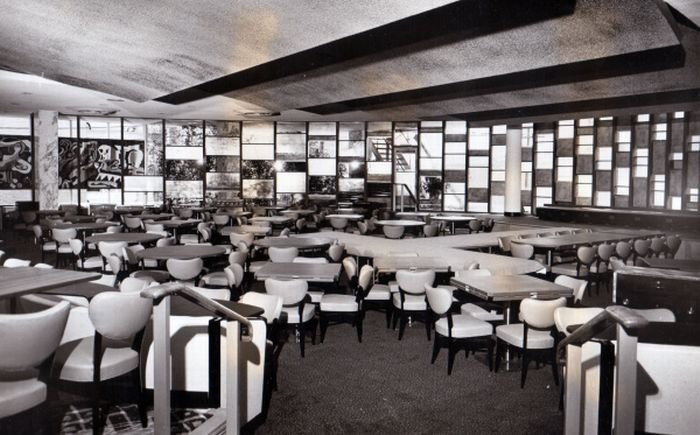
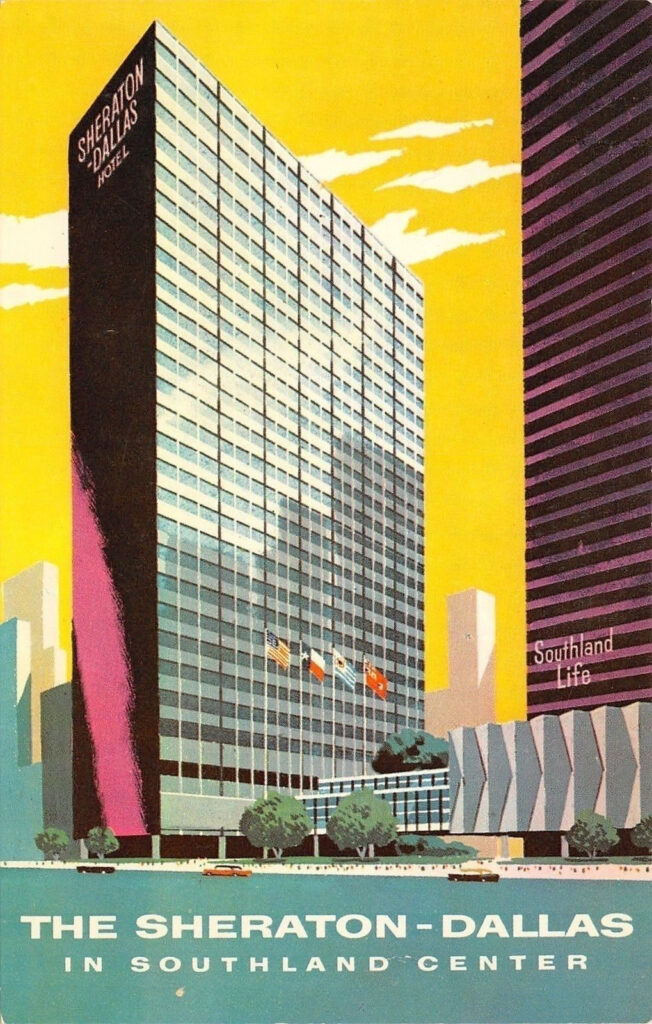
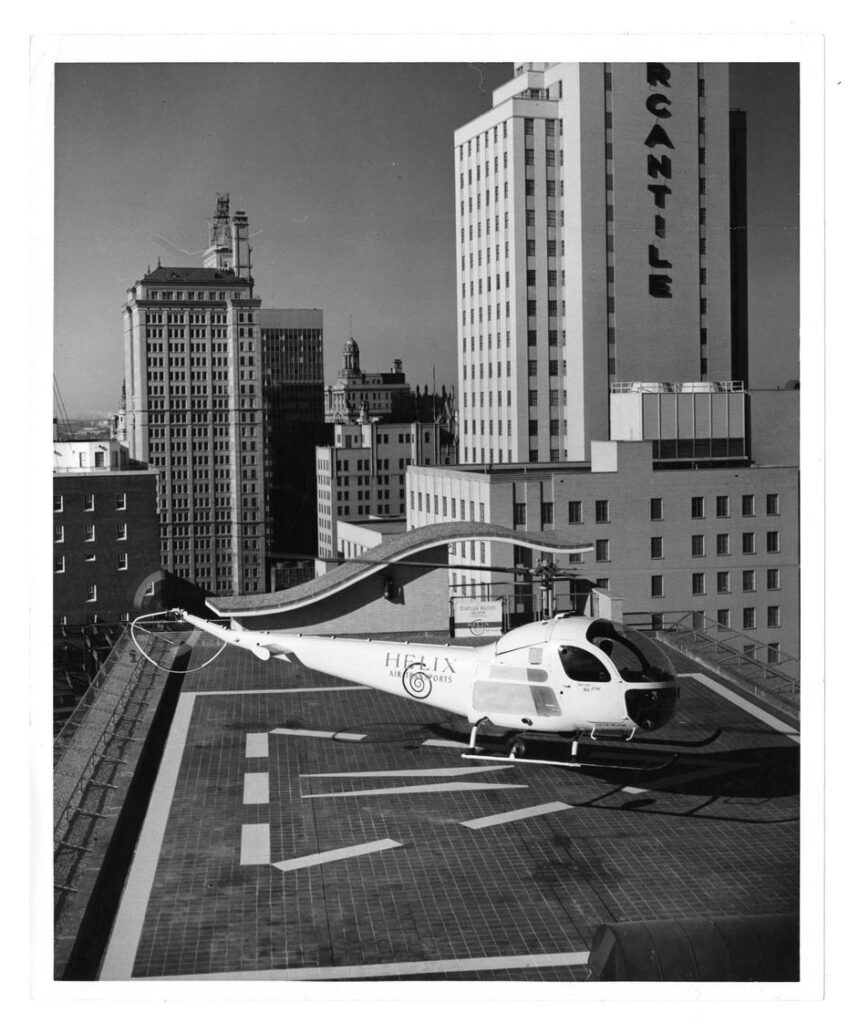
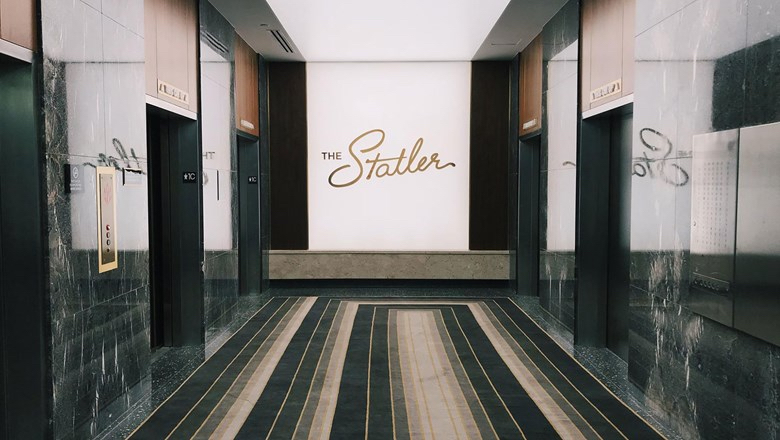


In 1978, Hyatt Regency Reunion re-energized the hotel business with its location near the Trinity River, the convention center and major thoroughfares. The adjacent Reunion Tower with its rotating Antares restaurant became a new destination. Plus, the tower helped transform the Dallas downtown skyline in the 1980s.
Loew’s Anatole Hotel opened, as a major convention and meeting hotel in 1979. It’s in the Market Center district at 2201 Stemmons Freeway just north of the downtown and features 1,606 guest rooms, one of the largest hotels in the South. Described as being part hotel and part art museum, it displays over a thousand priceless art objects. The addition of the Anatole and Hyatt Reunion hotels made it attractive for Dallas to host a national political convention in 1984 with Ronald Reagan’s campaign headquarters at the Anatole. The Anatole also hosts the annual Crystal Charity Ball, one of the largest charitable events in the country. Today, the Anatole still operates as the Hilton Anatole Hotel.
In 1981, The Mansion on Turtle Creek opened after Caroline Rose Hunt founded the Rosewood Property Co. in 1979 and purchased a private mansion near Turtle Creek. The Italian-Renaissance styled mansion was turned into a stylish hotel. While not as massive as some hotels, it was unique. The former estate’s fur and silver vault were reconfigured as a wine cellar. And the Mansion on Turtle Creek was awarded a five-star rating by Mobil Travel Guide and lives up to its reputation.
The Rosewood Crescent Hotel opened in Dallas in late 1986 with a gala event that many still recall. The property is part of a complex that includes a postmodern office, hotel, and retail space in Uptown Dallas. Originally owned by Dallas oil heiress Caroline Rose Hunt, the 10-acre complex retail space includes upscale shops such as Stanley Korshak and a myriad of restaurants. The hotel was the last large hotel opened in Dallas just before the economic downturn in the late 1980s. At first it struggled to attract enough customers in the depressed economy. But it has succeeded and has set the standards of quality as a beautiful centerpiece of Dallas’s re-vitalized Uptown area. In recent years, the luxurious hotel has been renovated and changed ownership and is now known as Hotel Crescent Court and with its recent renovation is still a stunner.
Today, hotels like The Joule, the Lumen, the Saint-Germain, the Ritz Carlton, the Canvas, the ZaZa, and others all compete for the trendy upscale tourist dollars. With so many choices, why not try them all on future visits as you travel to your next home away from home?

